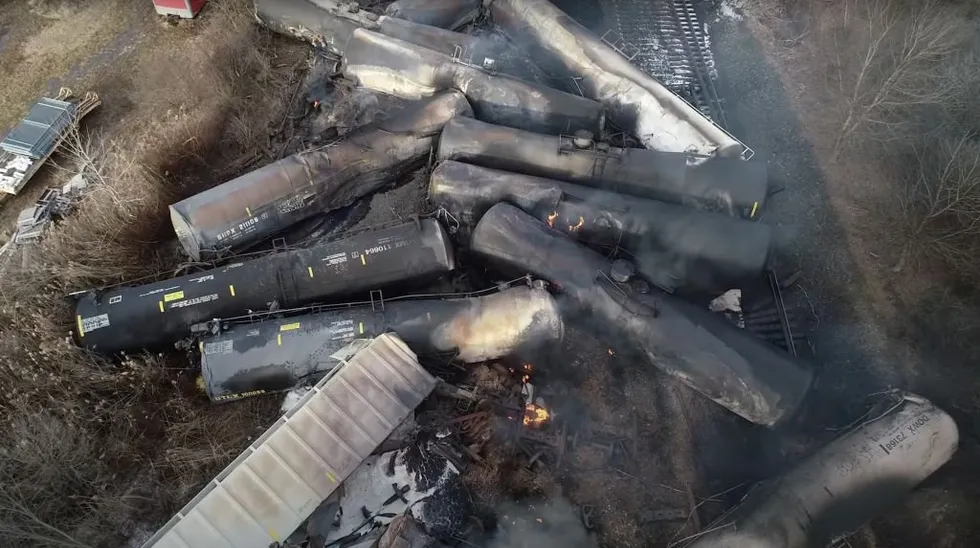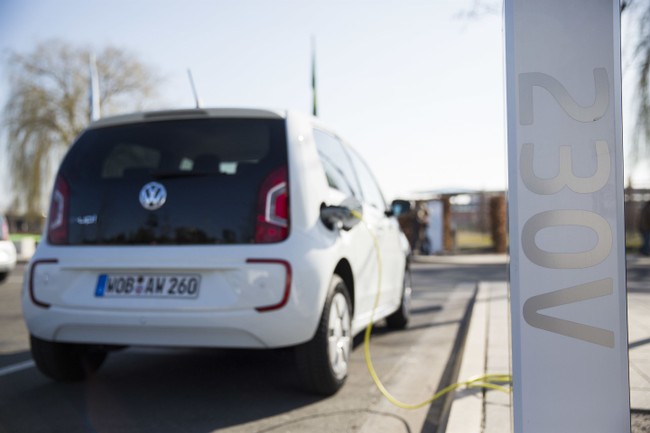NTSB confirms it was ‘unnecessary’ to create a toxic ‘mushroom cloud’ over East Palestine

A Norfolk Southern freight train with 141 loaded cars, nine empty cars, and three locomotives was making its way through Ohio the evening of Feb. 3, 2023, when disaster struck.
Thirty-eight cars, 11 of which contained hazardous materials — including vinyl chloride, benzene residue, hydrogen chloride, ethylene glycol monobutyl ether, ethylhexyl acrylate, and isobutylene — went off the tracks in the town of East Palestine. The worst, however, had yet to come.
The flames that apparently first showed beneath the train soon transformed part of the pile of derailed cars into an inferno.
‘We basically nuked a town with chemicals.’
Days into the fires, Norfolk Southern emergency crews, under the supervision of purported experts and first responders,
started their own blaze.
Citing the need to avoid a “catastrophic tanker failure,” the railway conducted a vent and burn of five tanks of vinyl chloride, darkening the sky above East Palestine with what the National Transportation Safety Board
called a toxic “mushroom cloud.”
Silverio Caggiano, a hazardous materials specialist,
told WKBN, “We basically nuked a town with chemicals so we could get a railroad open.”
Local creatures died off in the thousands. Nearby water was poisoned. Residents had to flee their homes.
Apparently it was all for nothing.
The NTSB
announced Tuesday that the decision by the local incident commander on Feb. 6 to execute the controlled burn “was based on incomplete and misleading information provided by Norfolk Southern officials and contractors. The vent and burn was not necessary to prevent a tank car failure.”
While the Federal Railroad Administration maintains that a vent and burn procedure should be the last resort, the NTSB indicated the railway “rejected three other removal methods and began planning for a vent and burn shortly after the derailment.”
According to an
abstract for the NTSB’s final report, the “observed downward temperature trend in tank car OCPX80370 indicates that polymerization was not occurring within the tank car, contrary to the representation by Norfolk Southern Railway and its contractors.”
Polymerization similarly did not occur in the tank cars containing vinyl chloride monomer — which “remained in a stabilized environment until the vent and burn” — meaning their alarmist defense of blowing up the trains was unfounded.
The safety board claimed the railway withheld information from Oxy Vinyls, the company that made the vinyl chloride, as well as information indicating the tank cars were cooling after the derailment,
reported the Associated Press.
Jennifer Homendy, the chair of the NTSB, indicated that investigators were told by a Norfolk Southern contractor that it did not keep records of temperature changes on the tank cars containing vinyl chloride.
‘We found through text messages through one of their employees, who provided that information in later interviews, that they did keep those records,” said the NTSB chair. “It took about two months before the team received those texts and the emails.”
Temperature readings were highly relevant when making the decision to execute a controlled burn.
In a
statement Tuesday, Norfolk Southern once again defended its decision, claiming it carefully considered all alternatives.
It also alleged that it and its contractors “received conflicting information from Oxy Vinyls’ personnel as to whether polymerization was or could be occurring. And Oxy Vinyls’ safety data sheet was clear that polymerization was possible in the circumstances observed at the derailment.”
Contrary to the railroad’s suggestion, Oxy Vinyls experts reportedly testified at previous NTSB hearings that they were certain at the time that polymerization wasn’t happening.
At the NTSB’s
hearing Tuesday, Homendy also accused Norfolk Southern — which has spent nearly $100 million greasing the hands of politicians in Washington, D.C., since 1990 — of tripping up the investigation and abusing its status as a party to the investigation,
“Norfolk Southern’s abuse of the party process was unprecedented and reprehensible,” said Homendy.
The railroad apparently dragged its feet when providing investigators with critical information. At other times, Homendy suggested that Norfolk Southern did not even bother providing requested information.
The NTSB also stressed in its report that Norfolk Southern’s delayed provision of consistent information to emergency responders “needlessly increased the time emergency responders spent near the derailment pileup and delayed the evacuation order, resulting in unnecessary and increased exposure of emergency responders and the public to postderailment hazards.”
The release of the board’s findings comes one month after a federal judge
approved Norfolk Southern’s $600 million class action settlement addressing class-action claims within a 20-mile radius of the derailment and personal injury claims within 10 miles of the derailment.
Like Blaze News? Bypass the censors, sign up for our newsletters, and get stories like this direct to your inbox. Sign up here!









